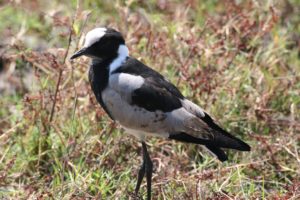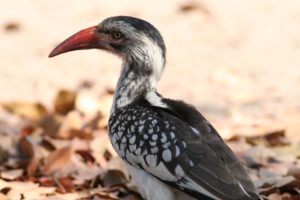by Tamás Székely
Motherhood is full of challenges. Mums need to look after not only themselves but also their offspring: mothers make sure the young have good food, healthy and develop well, and they need to shelter the young from harsh environment, nasty neighbours and hungry predators. In addition, mums need to keep a watchful eye on their partners: as an eminent neurobiologist puts it, from the mother’s point of view the husband is just yet another – not necessarily grown-up – offspring.

Birds stand out from the animal kingdom by having family life reminiscent of humans. In the vast majority of bird families the mother and the father share the domestic chores: they build the nest together and take turns keeping the eggs warm. Whilst sitting on a bunch of eggs does not sound hard work, if you have ever been locked up in a tiny room for months (like hornbill females do) – you know that it’s not fun – even though you got fed by your mate.
Once the babies pop out of eggs, the life of mums change: in about half of bird species they gather food around the nest and deliver them to the hungry chicks. Feeding 10-12 rapidly growing babies that seem to have insatiable demand is not a simple task: parents make hundreds of trips each day to bring the food home. In about 150 bird species the parents’ job is eased by their former offspring that stay at home and help rearing the next batch of offspring: instead of leaving home and seeking their own nest, these adolescents prefer to stay put. Indeed, in these cooperatively breeding species several generation live under the same roof – as humans did for millennia.

In the other half of bird species the babies are lot more independent from start. In plovers, quails, rails and grouse the chicks start feeding themselves shortly after hatching from the eggs. In some species this means picking seeds from the ground whereas in others the chicks catch agile prey such as flies and tiny midges. This is one of the amazing aspects of bird life: this feat corresponds to a human baby catching fast running lizards at just a few days old.
In nearly all bird species, however, the mums keep a watchful eye whilst the offspring develop. It’s a dangerous life out there: the world is full of snakes, raptors and carnivores that seek out the ever-growing chicks. Once a predator shows up around the nest, mum steps in: she warns her babies to keep silent whilst she is luring the predator away from the nest by pretending she is injured and thus an easy prey to catch. There are many unsung heroines here: lapwings, terns and skuas attack chick-hungry predators that are a hundred times larger than themselves, and more often than not, their vicious attacks force the intruder to back off.
So which bird species has the supermoms? It’s probably one of the 200 species of ducks, grouse, hummingbirds and songbirds where only the female does all parental chores: she works immensely hard to nurture, protect and teach her offspring so that her fledged young are prepared for the hard life that’s out there. But when the going gets really tough and breeding takes place in a superharsh environment such as in blistering deserts or in freezing barren valleys of Antarctica where a single parent is unable to cope with all pressures, even supermoms need someone to share the chores.
For details of Professor Tamás Székely’s research on bird behaviour and ecology see http://www.bath.ac.uk/bio-sci/contacts/academics/tamas_szekely/
Respond